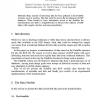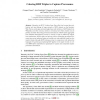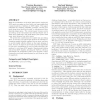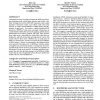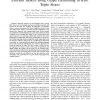128
click to vote
FAST
2009
14 years 10 months ago
2009
The notion of RDF Named Graphs has been proposed in order to assign provenance information to data described using RDF triples. In this paper, we argue that named graphs alone can...
117
Voted
DATESO
2006
15 years 1 months ago
2006
Huge amount of interesting data has been gathered in the DataPile structure since its creation. This data could be used in the development of RDF databases. When limited to basic i...
126
Voted
SSDBM
2010
IEEE
15 years 5 months ago
2010
IEEE
The Resource Description Framework (RDF) format is being used by a large number of scientific applications to store and disseminate their datasets. The provenance information, desc...
115
click to vote
SEMWEB
2009
Springer
15 years 7 months ago
2009
Springer
Abstract. Recently, the W3C Linking Open Data effort has boosted the publication and inter-linkage of large amounts of RDF datasets on the Semantic Web. Various ontologies and know...
195
click to vote
SIGMOD
2009
ACM
16 years 23 days ago
2009
ACM
With the proliferation of the RDF data format, engines for RDF query processing are faced with very large graphs that contain hundreds of millions of RDF triples. This paper addre...
110
click to vote
WWW
2004
ACM
16 years 1 months ago
2004
ACM
Centralized Resource Description Framework (RDF) repositories have limitations both in their failure tolerance and in their scalability. Existing Peer-to-Peer (P2P) RDF repositori...
120
Voted
WWW
2008
ACM
16 years 1 months ago
2008
ACM
Efficiently querying RDF [1] data is being an important factor in applying Semantic Web technologies to real-world applications. In this context, many efforts have been made to st...
121
click to vote
WWW
2008
ACM
16 years 1 months ago
2008
ACM
The World Wide Web Consortium's RDF standard primarily consists of (subject,property,object) triples that specify the value that a given subject has for a given property. How...
240
click to vote
ICDE
2009
IEEE
16 years 2 months ago
2009
IEEE
With the advance of the Semantic Web, varying RDF data were increasingly generated, published, queried, and reused via the Web. For example, the DBpedia, a community effort to extr...

